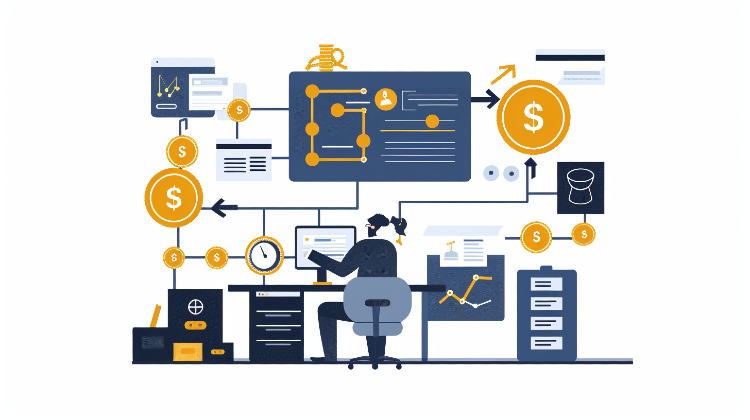As a digital artist, you've poured countless hours into perfecting your craft. Your artwork represents not just creative expression, but valuable intellectual property that can generate ongoing revenue through licensing agreements. However, without proper legal protection, you risk losing control of your work and missing out on fair compensation.
Digital art licensing has become a $15 billion industry, with artists earning substantial passive income by licensing their work to companies for use on products ranging from greeting cards to home decor. But navigating the legal complexities of licensing agreements can be overwhelming, expensive, and time-consuming. That's where professional contract templates become essential tools for protecting your creative assets.
Ready to protect your creative work immediately? Download our Professional Digital Art Licensing Contract Bundle and get instant access to attorney-ready templates.
DownloadWhat is Digital Art Licensing and Why Do You Need Legal Protection?
Digital art licensing is a legal agreement that grants another party permission to use your copyrighted artwork for specific commercial purposes while you retain ownership of the original work. Unlike selling your artwork outright, licensing allows you to earn ongoing royalties while maintaining control over how your art is used.

The Risks of Operating Without Proper Contracts
Many artists make the costly mistake of entering licensing agreements through informal arrangements or poorly drafted contracts. This can lead to:
- Lost revenue from unclear payment terms and royalty structures
- Copyright infringement occurs when licensees exceed their permitted usage rights
- Brand damage from poor-quality reproductions or inappropriate product applications
- Legal disputes that could have been avoided with clear contract terms
- Inability to terminate problematic licensing relationships
Benefits of Professional Licensing Agreements
A well-drafted licensing contract provides:
- Clear scope definition of what rights are granted and what are retained
- Structured payment terms ensuring fair compensation for your work
- Quality control provisions protecting your artistic reputation
- Termination clauses allowing you to exit unsuccessful partnerships
- Legal recourse in case of contract violations
Digital Art Licensing vs. Traditional Art Licensing: Key Differences
Understanding the distinction between digital and traditional art licensing is crucial for choosing the right contract template and protection strategy.

Digital Art Licensing Characteristics
Digital art licensing involves artwork created using digital tools such as:
- Digital illustrations created in software like Procreate, Adobe Illustrator, or Photoshop
- Vector graphics designed for scalable applications
- Digital paintings and mixed media compositions
- Typography and lettering designs
- Pattern designs and repeating motifs
Digital licensing contracts must address specific technical considerations including:
- File format specifications (AI, PSD, PNG, SVG requirements)
- Resolution standards for different applications
- Color profile management for consistent reproduction
- Version control and file delivery methods
Traditional Printed Art Licensing
Printed art licensing deals with physical artwork that's digitized for reproduction:
- Watercolor paintings scanned for commercial use
- Acrylic and oil paintings photographed professionally
- Hand-drawn illustrations converted to digital formats
- Mixed media pieces requiring specialized reproduction techniques
These agreements require additional provisions for:
- Color matching standards to ensure faithful reproduction
- Archival quality requirements for museum-grade prints
- Limited edition controls for numbered print runs
- Original artwork access for high-quality photography
Essential Components of a Digital Art Licensing Contract
A comprehensive licensing agreement should include several critical elements to protect both the artist and licensee while establishing clear expectations for the business relationship.
Copyright and Ownership Clauses
The foundation of any licensing agreement is establishing clear copyright ownership and attribution requirements. Your contract should specify:
- Copyright retention by the original artist
- Attribution requirements including proper credit placement
- Moral rights protection preserving artistic integrity
- Usage limitations preventing unauthorized modifications
Scope of License Definition
Clearly defining the scope prevents misunderstandings and unauthorized usage:
- Product categories where the art can be used
- Geographic territories for distribution
- Duration terms specifying license length
- Exclusivity levels (exclusive vs. non-exclusive rights)
Financial Terms and Royalty Structures
Payment terms should be detailed and enforceable:
- Royalty percentages varying by product category (typically 5-15% for physical products, 15-50% for digital products)
- Minimum guarantees ensuring baseline income
- Payment schedules with quarterly or monthly reporting
- Audit rights allowing verification of sales records
Quality Control Provisions
Protecting your artistic reputation requires quality standards:
- Production specifications for color accuracy and resolution
- Approval processes for product samples before mass production
- Brand protection measures preventing damage to your reputation
- Manufacturing standards ensuring professional presentation
How to Choose the Right Royalty Structure for Maximum Profit
Selecting the optimal payment structure significantly impacts your long-term earnings and should align with your business goals and the licensee's business model.
Percentage Royalty Models
The most common approach involves earning a percentage of net sales:
Advantages:
- Passive income potential with successful products
- Scalable earnings that grow with product success
- Lower barrier to entry for licensees
Recommended Rates by Category:
- Art prints and posters: 8-15%
- Home decor items: 5-10%
- Stationery products: 10-15%
- Textiles and apparel: 5-8%
- Digital products: 15-50%

Fixed Fee Arrangements
Some situations favor one-time payments:
Best for:
- Small product runs with limited sales potential
- Test market situations where sales volume is uncertain
- Licensed products with short lifecycles
- Situations requiring immediate payment
Hybrid Models
Combining advances with royalties provides both security and upside potential:
- Advance payments providing immediate income
- Royalty rates ensuring ongoing earnings
- Minimum guarantees protecting against underperformance
- Recoupment schedules balancing risk between parties
Common Mistakes Artists Make in Licensing Agreements
Learning from common pitfalls can save you thousands of dollars and protect your creative assets.
Inadequate Scope Definition
Problem: Vague language allowing licensees to expand usage beyond intended purposes.
Solution: Specify exact product categories, geographic limitations, and usage restrictions with detailed language.
Poor Quality Control Terms
Problem: Allowing licensees complete freedom in reproduction can damage your artistic reputation.
Solution: Include approval rights for production samples and maintain quality standards throughout the manufacturing process.
Weak Termination Clauses
Problem: Inability to exit problematic relationships damages long-term earning potential.
Solution: Include termination rights for cause (breach of contract) and convenience (strategic business decisions).
Insufficient Payment Protection
Problem: Unclear payment terms lead to delayed or incomplete compensation.
Solution: Establish specific reporting requirements, payment schedules, and audit rights with penalties for late payments.
Legal Requirements and Copyright Protection Strategies
Understanding your legal rights and protection strategies is essential for successful art licensing.

Copyright Basics for Artists
Copyright protection begins automatically when you create original artwork, but additional steps strengthen your legal position:
- Copyright registration provides stronger legal remedies
- Proper attribution maintains your reputation and rights
- Clear ownership documentation prevents disputes
- International protection through treaty agreements
Moral Rights Protection
Beyond copyright, artists have moral rights including:
- Right of attribution ensuring proper credit
- Right of integrity preventing harmful modifications
- Right of disclosure controlling when work is published
- Right of withdrawal in exceptional circumstances
International Considerations
Cross-border licensing requires additional attention to:
- Currency specifications and exchange rate provisions
- Tax implications in different jurisdictions
- Local law compliance varying by country
- Dispute resolution mechanisms across borders
Step-by-Step Guide to Customizing Your Licensing Contract
Professional contract templates provide the foundation, but customization ensures optimal protection for your specific situation.
Initial Assessment Phase
Before customizing your contract:
- Evaluate your portfolio and identify licensable works
- Research target markets and typical licensing terms
- Determine your pricing strategy based on industry standards
- Identify potential licensees and their business models
Contract Customization Process
Step 1: Choose the Appropriate Template
- Digital art template for computer-created artwork
- Printed art template for physical artwork reproduction
Step 2: Complete Required Information
- Artist and licensee contact details
- Detailed artwork descriptions and specifications
- Product category definitions and exclusions
Step 3: Select Payment Structure
- Choose royalty percentage, fixed fee, or hybrid model
- Set minimum payment thresholds and reporting schedules
- Include audit rights and late payment penalties
Step 4: Define Quality Standards
- Specify technical requirements for reproduction
- Include approval processes for production samples
- Establish brand protection measures
Professional Review Process
Even with professional templates, consider attorney review for:
- High-value licensing deals exceeding $10,000 annually
- International licensing agreements involving multiple jurisdictions
- Exclusive licensing arrangements requiring enhanced protection
- Complex product categories with unique requirements
Negotiation Strategies for Better Licensing Terms
Successful licensing requires effective negotiation skills to achieve favorable terms while maintaining positive business relationships.
Preparation Strategies
Strong negotiation begins with thorough preparation:
- Market research on industry-standard terms and rates
- Portfolio assessment highlighting your artwork's unique value
- Licensee research understanding their business model and needs
- Alternative options providing negotiating flexibility
Key Negotiation Points
Focus negotiations on terms that significantly impact your success:
Financial Terms:
- Royalty rates based on product category and distribution channels
- Minimum guarantee amounts ensuring baseline income
- Advance payments providing immediate compensation
- Payment schedules balancing cash flow needs
Scope and Control:
- Product category limitations protecting future opportunities
- Geographic restrictions allowing market segmentation
- Quality control rights maintaining artistic integrity
- Termination rights providing exit strategies
Relationship Building
Successful licensing often depends on long-term relationships:
- Clear communication preventing misunderstandings
- Flexibility on less critical terms
- Professionalism in all interactions
- Performance delivery building trust and repeat business
Conclusion: Protect Your Art, Maximize Your Income
Digital art licensing offers tremendous opportunities for creative professionals to build sustainable, passive income streams while maintaining ownership of their intellectual property. However, success requires proper legal protection through comprehensive licensing agreements that clearly define rights, responsibilities, and compensation structures.
Professional contract templates provide the foundation for successful licensing relationships, saving thousands of dollars in legal fees while ensuring industry-standard protection. By understanding the key components of effective licensing agreements and avoiding common pitfalls, artists can confidently enter the licensing market and build profitable, long-term business relationships.
Whether you're licensing digital illustrations for online products or reproducing traditional artwork for physical merchandise, the right contract template combined with proper customization creates the legal framework necessary for licensing success. Don't leave your creative assets vulnerable to exploitation or your income potential unrealized due to inadequate legal protection.
Take control of your art licensing career with professional-grade contract templates designed specifically for today's creative economy. Your artwork deserves the same level of professional protection as your creative talent.
Start Protecting Your Art Today
Don't wait until you face a licensing dispute or miss out on fair compensation. Professional artists worldwide trust our comprehensive contract templates to protect their creative assets and maximize their licensing income.
Get Your Digital Art Licensing Contract Bundle Now and join thousands of artists who have secured their creative future with proper legal protection.
DownloadWhat's Included:
- ✅ Digital Art Licensing Agreement Template
- ✅ Printed Art Licensing Agreement Template
- ✅ Comprehensive 3,000+ Word User Guide
- ✅ Multiple Payment Structure Options
- ✅ Industry-Standard Legal Protection
- ✅ Instant Download - Ready to Use Today


